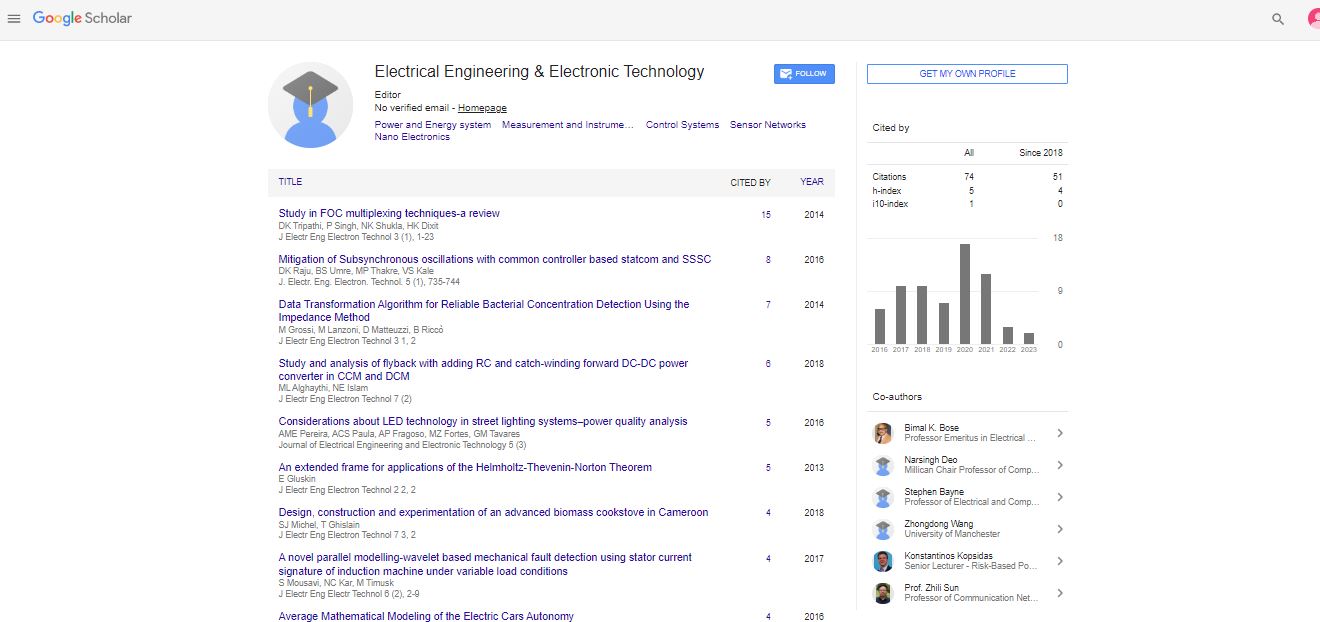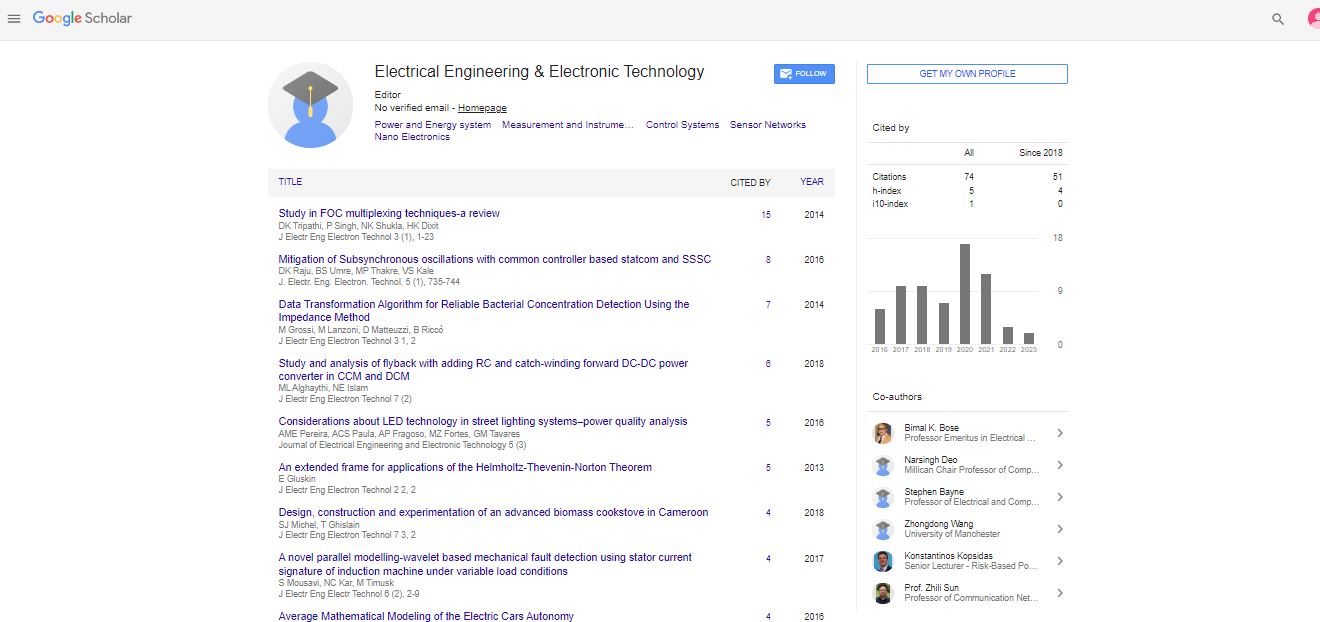Beyond classical heat transfer
Liqiu Wang
University of Hong Kong, Hong Kong
: J Electr Eng Electron Technol
Abstract
Unlike the past century that was blessed with ever-abundant cheap oil, this century energy has been rated as the single most important issue facing humanity. Over 80% of all the energy we are using today is produced in or through the form of heat. Engineering of heat-transfer process and medium with super thermal performance is thus vital for addressing the terawatt challenge. Driving force for heat transfer can be direct or indirect. The former is temperature gradient with conduction, convection and radiation as its three fundamental ways of heat transport. The latter comes from cross-coupling among different transport processes in the medium and transports heat in thermal waves which can be in various forms and tunable via manipulating the cross coupling. The first part of this talk is on developing a universal relation between heat flux and temperature gradient in temperature-gradient-driven heat transfer by finding both the necessary and sufficient condition in a systematic, rigorous way for a heat transfer process to satisfy fundamental laws like the second law of thermodynamics. This leads to a generalized Fourier law that provides effective means for engineering temperature-gradient-driven heat transfer processes with super thermal performance. It is normal that two or more transport processes occur simultaneously in heattransfer media. Examples include mass, heat, chemical, electrical and magnetic transports. These processes may couple (interfere) and cause new induced effects of flows occurring without or against its primary thermodynamic driving force, which may be a gradient of temperature or chemical potential or reaction affinity. Two classical examples of coupled transports are the Soret effect (also known as thermal diffusion) in which directed motion of a particle or macromolecule is driven by flow of heat down a thermal gradient and the Dufour effect that is an induced heat flow caused by the concentration gradient. While the coupled transport is well recognized to be very important in thermodynamics, it has not been well appreciated yet in the society regarding its potential of generating and manipulating thermal waves and resonance. In the second part of this talk, I will summarize our work on examining such a potential and show some unique, super features of heat transport with cross-coupling-driven thermal waves and thermal resonance from our experiments with thermal-wave fluids consisting of specially-designed multiphase materials with multi-scale inner structures of micro-, nano- and sub nano-sizes.
Biography
Liqiu Wang has received his PhD from University of Alberta, Canada and is a Professor in the Department of Mechanical Engineering, University of Hong Kong. He is also the Qianren Scholar, serves as the Director and the Chief Scientist of the Laboratory for Nanofluids and Thermal Engineering, Zhejiang Institute of Research and Innovation, University of Hong Kong. He has many years of university experience in thermal and power engineering, energy and environment, transport phenomena, nanotechnology, biotechnology and applied mathematics in Canada, China, Singapore and USA. He has published about 10 books/monographs and over 340 book chapters and technical articles and has also filed 22 patent applications. He was the Visiting Professor of Harvard University and Duke University and served as the Editor-in-Chief for the Advances in Transport Phenomena, the Editor for the Scientific Reports, the Associate Editor for the Current Nanoscience, the Guest Editor for the Journal of Heat Transfer and serves on the Editorial Boards of 19 international journals.
 Spanish
Spanish  Chinese
Chinese  Russian
Russian  German
German  French
French  Japanese
Japanese  Portuguese
Portuguese  Hindi
Hindi 
